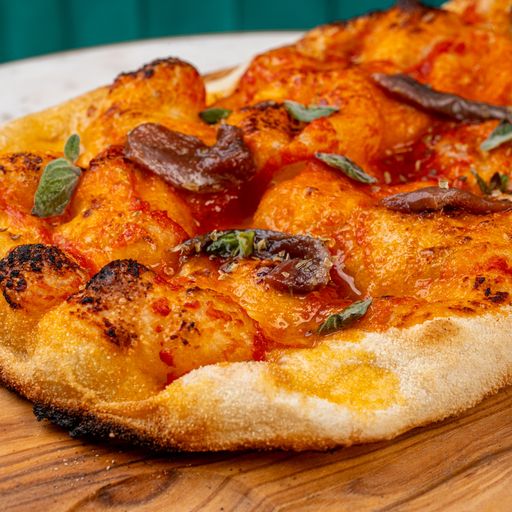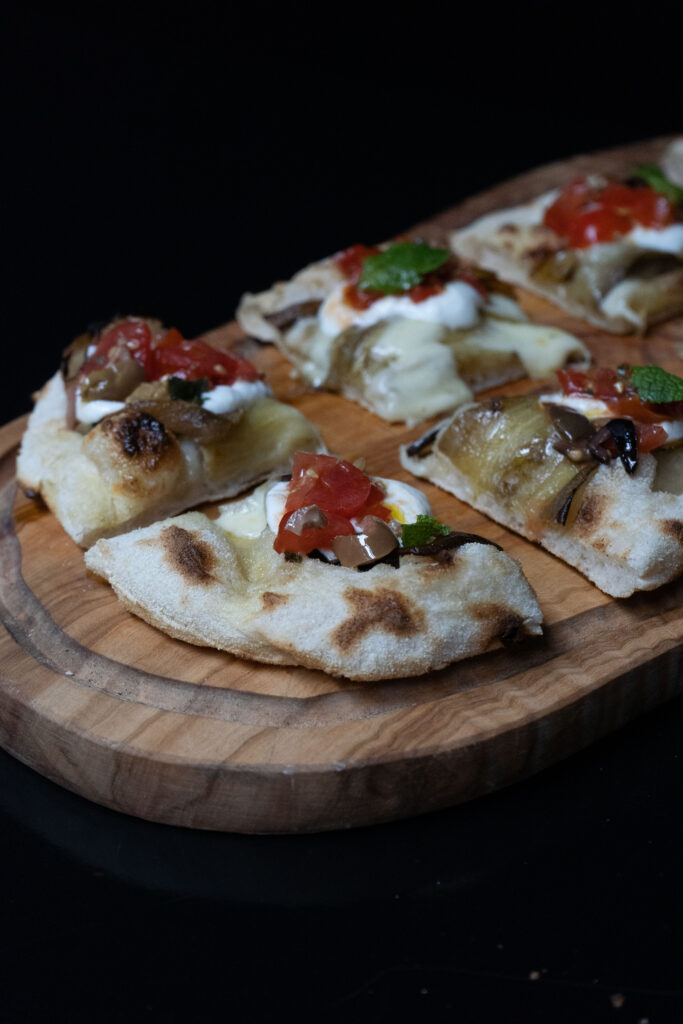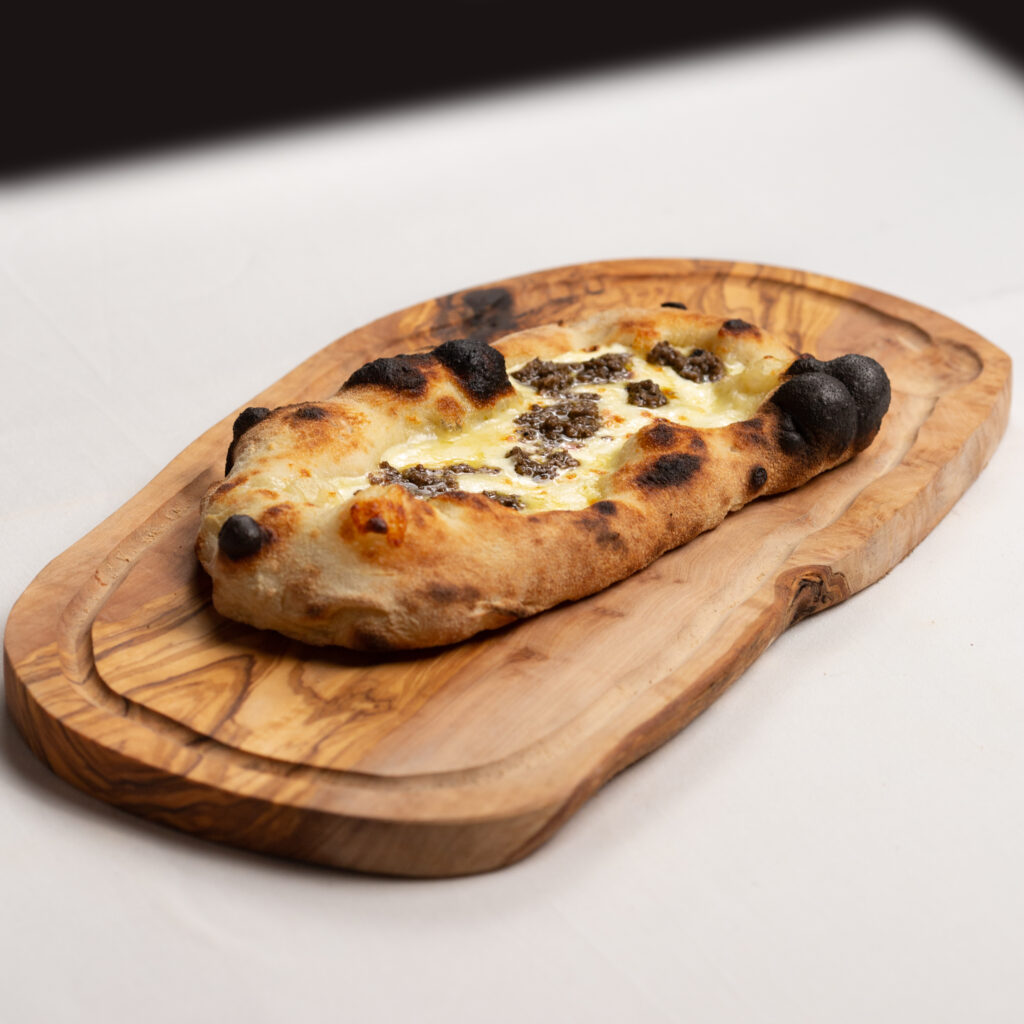
If you’re someone who loves exploring new tastes and culinary trends, chances are you’ve come across something called ‘Pinsa’ on a menu. More specifically in an Italian restaurant or pizzeria. But unless you’re Italian, have spent some time in Italy, or perhaps have a special connection with an Italian chef like myself, pinsa might have remained a bit of a mystery to you. Until now. So let me introduce you to what this Italian dish is. For starters, pinsa is relatively new to the international food scene. But it can simply be described as a cousin to its more famous cousin, pizza. This is why some people in some cases may look at it as just another type of pizza. But that’s not the case as it actually offers a unique culinary experience that’s quite different from the traditional pizza we all know and love. Allora, all that said, the question still remains, how can you tell the difference between a pinsa and a pizza?
“Unlike the usual round-shaped pizza, pinsa stands out with a distinct oval or even oblong shape. In some cases, it may look triangular in shape. This is the first difference you will spot when ordering a pinsa” explains Italian chef Aziz Danial.
And this different shape isn’t just for show, he continues, highlighting that the design of the pinsa in itself affects how each bite feels. And it’s all in the weight.

“Pinsa’s crust is much lighter, airier, and has a nice chewiness to it compared to the more denser crust of traditional pizza. This unique texture is thanks to a special blend of flours used in making the pinsa dough. That usually involves a combination of wheat, soy, and rice flour, along with dried sourdough. This blend results in a dough that is not only hydrated but also incredibly fragrant and easily digestible. In the end, you have a dish that actually enhances the overall pinsa experience.”
The thing about pinsa, even though you might just be hearing about it now, is that it’s not new. Pinsa has a rich history that dates back to ancient Rome, making it a culinary treasure with centuries of tradition behind it. In fact, pinsa can be traced back to the days of the Roman Empire when it served as a staple food for the people of Rome. Back then, pinsa was a simple and humble dish, crafted from a blend of cereals and raw flours that couldn’t be sold in the markets. These leftover ingredients were ingeniously repurposed by Roman peasants to create a crunchy and light focaccia-like bread, which laid the foundation for the Pinsa we know today.
Over the years, pinsa has evolved and continues to be adapted, reflecting the changing tastes and preferences of different regions in Italy – and the rest of the world of course. And these days most of us living and adapting trends from our social media feeds, platforms like TikTok and Instagram have really helped pinsa gain even more popularity. Captivating foodies all over the place with its uniqueness. It in fact has become such a favourite thing to talk about among food bloggers, influencers, and food lovers like myself to talk about when discussing cool food trends to try.
“That’s because we are increasingly becoming a more health-conscious world. And more and more people are becoming interested in eating healthier foods. Especially with the rising demand for gluten-free options, individuals are exploring alternatives dishes like pinsa that offer that extra layer of health benefits. ” adds Aziz Danial.
What also makes it healthier is the fact that pinsa is cooked at a lower temperature than pizza, often in a specific pinsa oven. This method ensures a less oily, easier-to-digest unlike the traditional pizzas, especially Napolitano pizzas that tend to be cooked at extremely high temperatures. Not forgetting that pinsa the pinsa dough is fermented for up to 72 hours.
Equally, one other best thing about pinsa is its versatility when it comes to toppings. From classic combinations like Margherita with fresh tomatoes and mozzarella to more gourmet options like prosciutto and arugula, there’s something for everyone.

Aziz adds, “Pinsa is really versatile in the way it’s flavoured. When trying to make it, I personally would recommend using unconventional softer toppings like Gorgonzola cheese or burrata to balance out the crunchy dough.
For the true pinsa experience, a trip to Rome is recommended. However, with pinsa’s growing popularity, many pizzerias worldwide now offer their take on this Roman delight. Authenticity is key, and Aziz advises, “Seek establishments that prioritize high-quality ingredients and adhere to traditional preparation methods for an authentic experience.”

Will pinsa Take Over pizza in a popularity contest?
Aziz thinks not. “I believe pinsa will never become or overcome pizza as pizza is an Italian status symbol and Italians are very proud of this product. However, I think that pinsa will become more popular with no doubt.”
Some things to remember when you see pinsa and pizza on a menu
Unique Shape: While pinsa boasts an elongated oval or rectangular shape, traditional pizza is typically round in shape.
Special Dough: Pinsa’s dough is crafted from a blend of wheat, soy, and rice flour, along with dried sourdough, resulting in a lighter, airier texture with a delightful chewiness. In contrast, traditional pizza dough is usually made from wheat flour only, resulting in a denser crust.
Healthier Profile: With its diverse flour blend, pinsa may offer a broader nutritional profile compared to traditional pizza crust, appealing to those seeking healthier options. Traditional pizza crusts, made solely from wheat flour, may not provide the same variety of nutrients.
Versatile Toppings: The lighter crust of pinsa complements a variety of toppings, allowing for endless creative exploration. Traditional pizza also offers a wide range of toppings, but its denser crust may not pair as well with certain toppings as Pinsa’s crust does.
Longer Fermentation: Pinsa dough undergoes a longer fermentation process, up to 72 hours, resulting in a more complex flavour profile and enhanced digestibility. Traditional pizza dough typically undergoes a shorter fermentation process, resulting in a different flavour profile and texture.
Ultimately, while pizza holds a special place in Italian culture, the unique qualities of pinsa are shining and helping gain traction among global food enthusiasts, ensuring its steady ascent in the culinary world. And remember, while both pizza and pinsa have their own unique qualities, the most important thing is that they both taste delicious – just don’t ask an Italian which one is better unless you’re ready for a heated debate!



